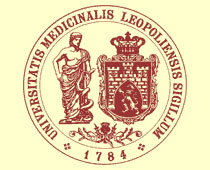Дисертація на здобуття наукового ступеня кандидата медичних наук за спеціальністю 14.01.13 – інфекційні хвороби. – Інститут епідеміології та інфекційних хвороб імені Л.В. Громашевського АМН України, Київ, 2003.
У дисертації викладені результати клініко-біохімічних досліджень 206 хворих на гострі та хронічні вірусні гепатити різної етіології. Встановлено, що у цих хворих значно підвищується вміст L-аргініну та азотистих сполук (NO2, NO2- та NO3-) в крові. При гострому перебігу вірусних гепатитів спостерігались високі значення L-аргініну в сироватці хворих. При доброякісному перебігу ВГ, особливо це стосується ГА, його показники швидко нормалізувались. При гострому ГВ спостерігалось значніше, ніж при ГА, підвищення рівнів L-аргініну на початку хвороби та їх відхилення від норми в час виписки із стаціонару. При гострому ГС рівні L-аргініну були незначно вищими ніж при ГВ і практично не змінювались вподовж усього гострого періоду. Виявлено, що рівень NO2- в цільній крові хворих на гострі гепатити А, В та С при госпіталізації перевищував показники здорових осіб у 2-3 рази. В сироватках рывнь NO2 перевищував норму у 5-6,5 разів. У хворих на ГА, і меншою мірою на ГВ, на момент виписки цей показник наближався до норми, тоді як при гострому ГС практично не зменшувався. Вміст NO3- в цільній крові хворих на гострі гепатити А, В та С при госпіталізації перевищував показники контрольної групи в 2,5-3 рази. При обстеженні хворих на хронічні ГВ, ГС та гепатити-мікст (ГВ+ГС) встановлено, що всі показники (L-аргінін та азотисті сполуки) практично у всіх обстежених перевищували норму, і лікування в стаціонарі особливо не впливало на їх рівень. Одержані результати дозволяють стверджувати, що рівень і динаміка L-аргініну та сполук оксиду азоту при гострих вірусних гепатитах залежать від етіології хвороби, а не від важкості та тривалості перебігу. Результати їх визначення можуть бути додатковим критерієм адекватності імунної та інтерферонової відповіді на вірусну репродукцію та допоміжним тестом оцінки ефективності терапії інтерфероногенами.
Ключові слова: вірусні гепатити, інтерферон, оксид азоту, L-аргінін.
ANNOTATION
Kiselyk I.O. L-arginine and nitric oxide bonds for the patients by virus hepatitis’s. Theoretical and practical aspects of their researches. – The Manuscript.
The thesis on a scientific degree competition for the candidate of medical sciences on a speciality 14.01.13 – Infections Diseases. – Institute of Epidemiology and Infections Diseases of Academy of Medical Sciens of Ukraine, Kiev, 2003.
In a thesis the results of clinical-biochemical researches 206 patients by acute and chronic virus hepatitis’s of different aetiology are stated. It has been established, that for the patients with acute and chronic virus hepatitis’s the contents of L-arginine and nitrous bonds considerably rise (NO2, NO2- and NO3-) in blood. In acute viral hepatitis’s the high level of L-arginine in the patients serums was observed. In good-quality streaming virus hepatitis’s, in particular hepatitis A, its parameters were quickly normalised. In acute hepatitis B more appreciable was observed, than at hepatitis А, increasing levels of L-arginine in the beginning of the illness and their deflection from norm at an from the hospital. In acute hepatitis С the level of L-arginine was a little bit above than that seeing hepatitis В and practically did not vary during all acute season. It hassle been reported that the level of NO2- in an integral blood of the patients on acute hepatitis’s and, in and with at hospitalisation exceeded parameters of the healthy persons in 2-3 times, whereas in serums this parameter exceeded norm in 5-6,5 times. Contents of NO3- in an integral blood of the patients on acute hepatitis’s and in and with at the moment of hospitalisation exceeded parameters of control group in 2,5-3 times. At inspection of the patients chronic hepatitis В, hepatitis С and hepatitis B+C fixed, that all parameters (L-arginine and the nitrous bonds) practically for all inspected exceeded norm, and the treatment in the hospital did not have any influence on the changes of their values. The obtained results allow to verity, that the levels both changes of L-arginine and nitric oxide bonds in acute viral hepatitis’s depend on the aetiology of the illness and, in a smaller measure, from the severity and duration of their course.
Keywords: viral hepatitis’s, interferon, nitric oxide, L-arginine.


